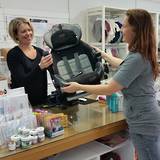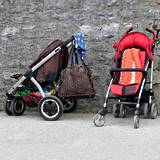Do your kids car seats have more germs than a toilet?
|
Who would have thought that your child’s car seat could harbour more germs than your toilet, but a survey carried out by scientists at the University of Birmingham discovered just that. Are you aware of the risks?
|
You might also be interested in ...
What to do with an expired car seat
Is your child’s car seat about to expire? You might be surprised to know that more than 40,000 child car restraints expire each year in New Zealand. You’ll also be surprised to know that the majority of these end up in landfill, despite over 90% of a typical seat being recyclable. Find out how you can recycle or repurpose your kids expired or damaged car seats.
Buying guide to buggies
Who would’ve thought there’s so much to think about when buying a buggy (pushchair, pram or stroller) for your baby or toddler! As well as sticking to your budget, there are so many different types of buggies to choose from, different brands and different features you’ll need to consider when buying the best buggy to suit you and your little one. Check out these useful tips.







When scientists from the University of Birmingham took swabs of 20 car seats and 20 homes, they found that there was an average of 100 potentially dangerous bacteria and fungi lurking in each square centimetre of car seat fabric.
This compared to 10-50 different germs on the average household toilet seat, handles and lids.
Some of the bugs they found were potentially dangerous including E. Coli and salmonella, making cars potentially more hazardous and unhealthy than anywhere else in our homes.
When you consider the squashed snacks and spilt drinks, not to mention the occasional nappy disaster or sick accident that end up on your little one’s car seat, it’s perhaps no surprise.
So if your little one’s car seat has seen better days, check to see if you can remove the cover for washing either by hand or in the washing machine. Just don’t tumble dry it as it could shrink the cover, making it difficult to put it back on.
Sponging their car seat down regularly with soapy water will help to remove stains and kill germs, but do this on days when you don’t need to go anywhere as it may take a while to dry out.
Alternatively, try sprinkling the car seat fabric with bicarbonate of soda and then vacuuming the seat, as that helps to remove strong smells and stains too.
Check out our other Hot Topics on:
- Car seat expiry
- Car seat safety for kids in NZ
- Kids gear - cleanliness and hygiene
Image source: motherandbabyuk